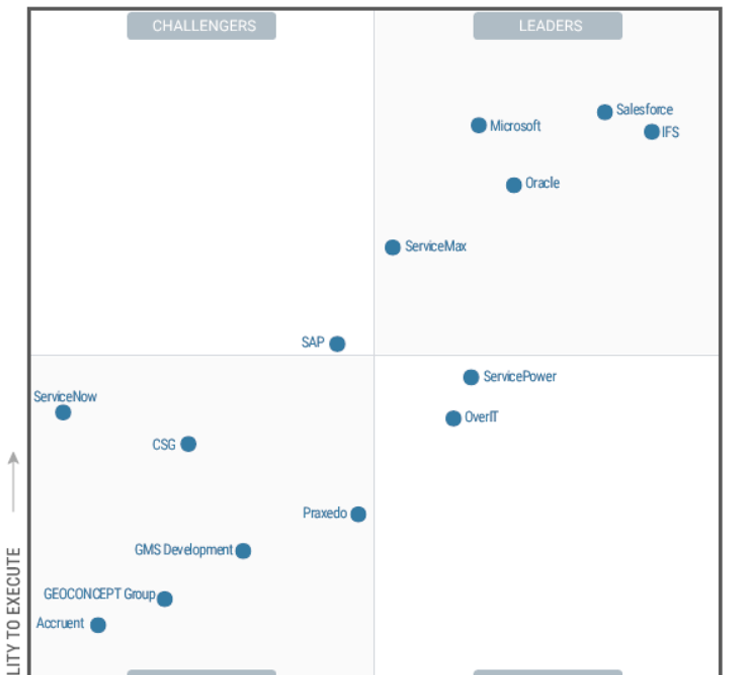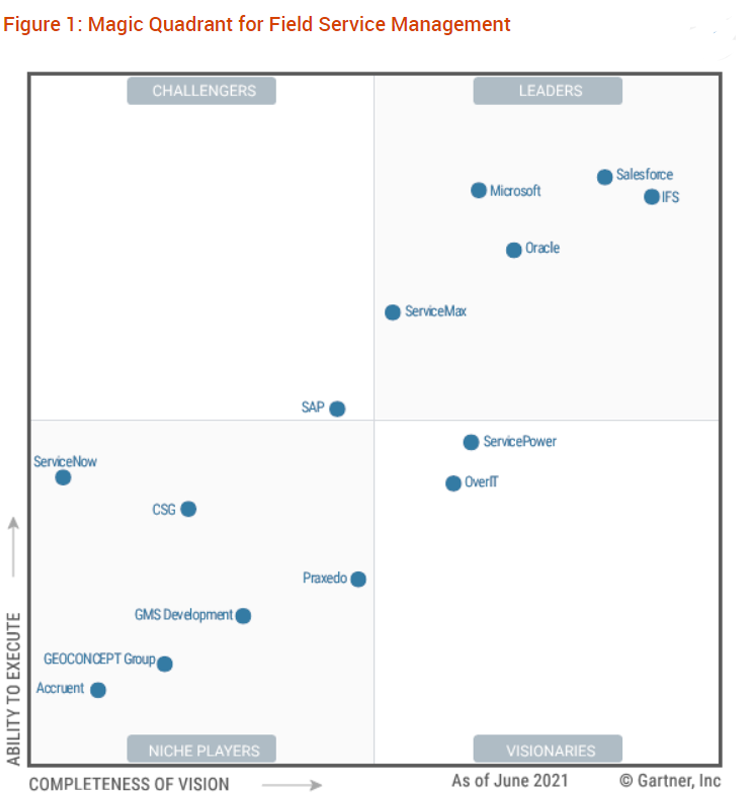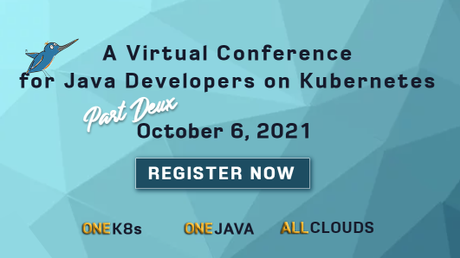
Dynamics 365 Field Service named a Leader in the 2021 Gartner® Magic Quadrant™
This article is contributed. See the original author and article here.
Field service is evolving quickly and changes in technology have made a quantum leap forward in customer engagement, elevating frontline worker effectiveness and optimizing service operations. New technologies and advanced analytics are reshaping field service to dramatically improve service levels, personalize the customer experience, increase productivity, and enhance perceived value. It is these differentiators that have helped elevate Microsoft Dynamics 365 Field Service as a driving force within the field service community.

We are proud to share that Gartner has again positioned Microsoft as a Leader in its 2021 Magic Quadrant for Field Service Management. We believe this position as a Leader reflects our expansive product functionality.
By combining IoT diagnostics, scheduling, asset maintenance, and inventory on the same platform, field service organizations can reduce downtime by diagnosing and resolving issues before customers are aware.
Gartner defines field service management (FSM) as a discrete market within the broader customer service and support software market. Field service providers (FSPs) typically dispatch technicians to remote locations to provide installation, repair, or maintenance services for equipment or systems. They may manage, maintain and monitor these assets under a predefined service or maintenance contract. Gartner’s view of the FSM market is focused on transformational technologies and approaches to meeting the future needs of end users. It is not focused on the market as it is today.
Dynamics 365 Field Service capabilities
Many field service capabilities highlighted by Gartner are innovations pivotal to providing world-class customer care.
Microsoft has pioneered cutting-edge technologies enabling the development of rich features that empower technicians to increase productivity, optimize resources, and enhance the customer experience. These resulting capabilities help field service organizations quickly align service operations to strengthen business continuity, build resiliency to withstand a changing economic landscape, and provide the flexibility to take on new opportunities when they arise.
Burckhardt Compressionis a perfect example of an organization reshaping the delivery of service by leveraging Microsoft technology. This Swiss marine gas compression manufacturer provides critical compressor repair and maintenance services for ships at sea. Compressors create high-pressure conditions that transform gas from a gaseous state to liquid to reduce volume. If a compressor fails, time is of the essence as the liquid gas can expand and return to a gaseous state, building pressure and becoming highly explosive. To respond to an incident or perform proactive maintenance, Burckhardt Compression had to send a service engineer to wherever the compressor was locatedwhich was time-consuming, resource-intensive, and simply not scalable.
The company turned to Dynamics 365 Field Service, allowing service engineers to engage in real-time video chat and provide instructions and markups onscreen over the actual compressor. When a call is initiated via Dynamics 365 Remote Assist, a case is automatically created in Field Service and a recording of the repair work is created for future needs. Burckhardt Compression is thrilled with the seamless workflow and interoperability, increased service capacity, and the enhanced safety resulting from the new process.
What’s ahead for Dynamics 365 Field Service
For the 2021 release wave 2, we continue our focus on delivering rich, innovative features that map to three distinct pillars:
- Tailor customer engagements. Deliver empathetic connected service experiences that provide a holistic view of customers’ case information to enhance first-time fix rates and support smooth service delivery every time.
- Elevate employee effectiveness. Empower employees across your service organization to solve problems faster with actionable insights, enriched data signals, and mixed reality.
- Optimize service operations. Drive proactive service with IoT, unlock new service revenue streams, and reduce downtime and service costs.
We will also continue to enhance this leading end-to-end field service solution, further transforming field service organizations from a reactive break or fix model to a proactive model with built-in predictive modes. We are broadening the possibilities of additional business models such as outcome-based service or “anything-as-a-service.”
We aim to innovate Dynamics 365 Field Service, transforming service operations by connecting people, places, and things to deliver customer-centric experiences. We are committed to driving unparalleled customer engagements by personalizing experiences and anticipating and meeting your customer’s needs and wants. Our focus on ensuring your employees are effective in any capacity they fill, from department managers to dispatch to technicians onsite, will continue to guide us in delivering the analytics and tools you need to resolve any issue the first time, every time, and identify gaps in service delivery and opportunities for improvement. These efforts can drive new revenue streams that were previously overlooked.
We’ve just gotten started, and the possibilities are limitless.
The bottom line
Many field service organizations consist of technicians making service calls, identifying the issue, ordering the required part, and rescheduling to commence the repair. This process is inefficient, costly, and unsatisfying to the customer. Field service is changing. Today organizations are evolving into profit centers, redefining business models, and creating powerful and fulfilling customer experiencesall supported by leading-edge solutions like Dynamics 365 Field Service.
We are excited to be positioned as a Gartner 2021 Magic Quadrant Leader for Field Service and are committed to bringing you the best field service application available. Depend on Microsoft Dynamics 365 Field Service to help you tailor customer engagements, elevate employee effectiveness, and optimize service operations.
Learn more:
- Read the Gartner 2021 Magic Quadrant Report for Field Service Management.
- Learn more about Dynamics 365 Field Service.
- Check out the release wave 2 for Dynamics 365 Field Service.
GARTNER and Magic Quadrant are registered trademarks and service mark of Gartner, Inc. and/or its affiliates in the U.S. and internationally and are used herein with permission. All rights reserved. This graphic was published by Gartner, Inc. as part of a larger research document and should be evaluated in the context of the entire document. The Gartner document is available upon request from Microsoft. Gartner does not endorse any vendor, product or service depicted in its research publications, and does not advise technology users to select only those vendors with the highest ratings or other designation. Gartner research publications consist of the opinions of Gartner’s research organization and should not be construed as statements of fact. Gartner disclaims all warranties, expressed or implied, with respect to this research, including any warranties of merchantability or fitness for a particular purpose.
Gartner, Magic Quadrant for Field Service Management, 31 August 2021, Jim Robinson, Naved Rashid.
The post Dynamics 365 Field Service named a Leader in the 2021 Gartner® Magic Quadrant™ appeared first on Microsoft Dynamics 365 Blog.
Brought to you by Dr. Ware, Microsoft Office 365 Silver Partner, Charleston SC.

![[Guest Blog] Living in an autism bubble in an ever-changing world.](https://www.drware.com/wp-content/uploads/2021/09/fb_image-91.png)


Recent Comments